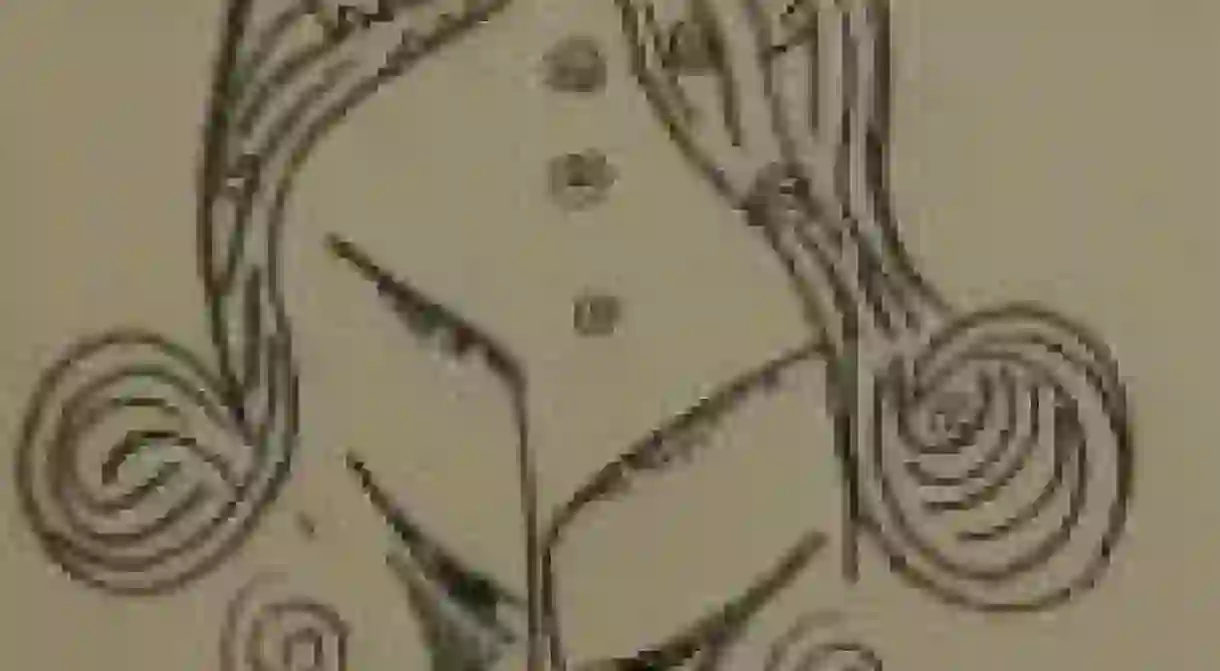Resurrecting Tradition: Three Artists Of Nigeria's Nsukka Group

All associated with the art program that runs at the University of Nigeria, the artists of the Nsukka group continue to interweave traditional Nigerian craft, specifically uli, the linear drawings of the Igbo people in Nigeria, with European media.

Uli is the term that defines a form of drawing particular to Igbo culture; a linear style that uses minimal perspective. As a traditional craft, its use was largely a thing of the past when, in the 1970s, certain contemporary artists began to revive its practice as a visual language. Whereas before, uli was practiced by Igbo women, since its resurrection, the artists associated with the group have been primarily male, and all have ties to the Fine Art program at University of Nigeria.
Whilst the movement started as a specific engagement with uli, not all artists in the Nsukka group have made reference to this craft in their work. Nonetheless, what unites the artists is an exploration of traditional techniques or aesthetics, and their application within the framework of contemporary art. Here we look at the work of Uche Okeke, one of the group’s founding members, along with two artists who later came to be associated with the Nsukka group: Olu Oguibe, who studied at the university in 1986, and El Anatsui, a Ghanaian artist who taught there from 1996-2011.
El Anatsui
Using a variety of materials, Anatsui’s projects are labour intensive, intricately crafted, physical pieces of work. His works traverse the boundary separating craft and art, craftsman and artist. His best-known pieces, called gawk (‘metal’ or ‘fashioned cloth’) are huge –even exaggeratedly – structural wall installations that evoke the sacred kente cloth, traditionally the ‘cloth of kings’ among Ghana‘s Akan people.
The monumental structures are stitched together using hundreds of thousands of lustrous aluminium liquor bottle caps recycled and given new function: what appears from far off as a monolithic single structure suspended in time is revealed to encompass the countless hours of labour-intensive hand-crafting from Anatsui and his team of assistants. Read an in-depth article on his work here.

El Anatsui, TSIATSIA – searching for connection, 2013, Aluminium, (bottle-tops, printing plates, roofing sheets) and copper wire,15.6 x 25 metres, on the facade of the Royal Academy of Arts | Photo by Jonathan Greet, Image courtesy October Gallery, London

El Anatsui Balkan 2012 Aluminium and copper wire 260 x 320cm | Photo by Jonathan Greet, Image Courtesy October Gallery London

El Anatsui, Iris, 2012, Aluminium and copper wire, 300 x 310 cm | Photo Jonathan Greet, Image courtesy October Gallery, London
Olu Oguibe
Art historian, curator, public intellectual, theorist, artist, and poet, Nigerian-born Oguibe explores issues of identity and place, movement and belonging. Though educated in England and the United States, and a naturalised American citizen living in Connecticut, Oguibe continues to draw on the experience of being a wandering, itinerant individual in the world whilst remaining rooted in one’s homeland, to which one must return in the end.

Olu Oguibe, Wall, 2010. Installation, New England field stones, 36″x36″x108″, Real Art Ways, Hartford CT | © John Groo / Real Art Ways

Olu Oguibe, Wall, 2010. Installation, New England field stones, 36″x36″x108″, Real Art Ways, Hartford CT | © John Groo / Real Art Ways

Olu Oguibe, Wall, 2010. Installation, New England field stones, 36″x36″x108″, Real Art Ways, Hartford CT | © John Groo / Real Art Ways
Uche Okeke
Nigerian painter, teacher, and founding member of the Nsukka group, Okeke grew up in the Igbo culture where his mother was an uli artist. His subject matter includes themes from Igbo mythology, from the history of modern Nigeria, and from Nigerian literature, such as China Achebe’s Things Fall Apart. Like the other members of the Nsukka group, Okeke interweaves European art techniques with African themes. Some of Okeke’s works in particular use bold colours and overlapping forms that explore the tension between space and line.

Courtesy Skoto Gallery

Courtesy Skoto Gallery

Head of Akiuka | Coutesy Skoto Gallery

Uche Okeke, Isi Nwoji, 1972 | Courtesy Skoto Gallery

Owelle of Owe, 1993 | Courtesy Skoto Gallery













